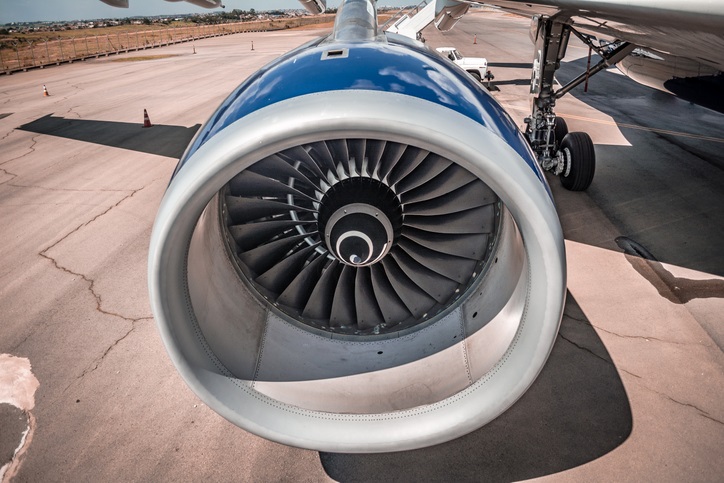Can Rolls-Royce motor through Covid losses?
Venerable engine-maker was hit by the pandemic, but has plans to strengthen its balance sheet.
27th August 2020 13:14
by Graeme Evans from interactive investor
Venerable engine-maker has taken a big hit from the pandemic, but has plans to strengthen its balance sheet.

Rolls-Royce (LSE:RR.) shares were the subject of more heavy selling today after the engines giant revealed the extent of the financial crisis engulfing the company in the wake of Covid-19.
Its half-year figures showed a bottom-line loss of £5.4 billion. Net debt spiralled to £1.7 billion at the end of June, after an alarming £2.8 billion of cash haemorrhaged from the business as income from airline flying hours dried up due to aviation shutdowns.
Analysts at Jefferies fear that debt could peak at £5 billion by the end of 2021, which is why Rolls said today it wants to raise at least £2 billion from the sale of businesses including Spain's ITP Aero. It is also expected to tap shareholders for a further £2 billion as part of a longer-term bid to restore its credit rating to investment grade.
The company hopes to be generating cash again by the second half of next year, having taken “significant and rapid action” to cut costs. This includes a restructuring plan announced in May involving the loss of 8,000 roles from the civil aerospace division.
- The Week Ahead: Rolls-Royce, WPP, Flutter Entertainment
- Insider: defence contractor bosses reload shares
Today's figures contained few major surprises after a detailed trading update in July. However, shares fell by 7% after investors were spooked by the company modelling a “severe but plausible downside scenario”, under which a second wave of Covid-19 disruption would leave Rolls needing to draw down a £1.9 billion revolving credit facility.
Much will now depend on a recovery in engine flying hours, given that this typically generates around £4 billion of annual revenues. The hourly figure slumped by as much 80% in April as civil aerospace revenues dropped £1.5 billion in the first half of 2020.
The Rolls base case is for engine flying hours to be at 45% of 2019 levels over the course of this year, recovering to 70% next year and 90% by 2022. Deliveries to civil aerospace customers fell to 137 engines in the first half, compared with 257 the same period a year ago.
Jefferies added: “The severe but plausible downside scenario might be seized upon, but we view it as Rolls-Royce helpfully signalling the factors that result in the current share price. The wider implications are nasty, in our view.
“We see Rolls-Royce battling lower engine flying hours, but making good progress on restructuring and cash conservation.”
Shares have plunged from 700p in February to a 15-year low of 235p, but the team at Jefferies see the potential for a recovery back to 500p. Counterparts at UBS have a 265p target price.
Today's bottom-line loss of £5.4 billion included the unwinding of some currency hedging contracts due to the expected shortfall in orders for the next seven years. Excluding this, it reported an operating loss of £1.8 billion due to impairments and other write-offs.
- ii view: Rolls Royce cancels dividend but shares up 18%
- Take control of your retirement planning with our award-winning, low-cost Self-Invested Personal Pension (SIPP)
Rolls has boosted its liquidity position to £8.1 billion, however, with this comprising £4.2 billion of cash, the £1.9 billion revolving credit facility and an additional £2 billion undrawn term loan finalised this month.
Chief executive Warren East says: “While our actions have helped to secure the group's immediate future, we recognise the material uncertainties resulting from Covid-19 and the need to rebuild our balance sheet for the longer term.
“We have identified a number of potential disposals that are expected to generate proceeds of more than £2 billion, including ITP Aero and a number of other assets.
“Furthermore, in light of ongoing uncertainty in the civil aviation sector, we are continuing to assess additional options to strengthen our balance sheet to enable us to emerge from the pandemic well placed to capitalise on the long-term opportunities in all our markets."
He is hopeful a recovery in the company’s power systems division and continued resilience in defence will help to deliver much improved returns as the world recovers from the pandemic.
Full performance can be found on the company or index summary page on the interactive investor website. Simply click on the company's or index name highlighted in the article.
These articles are provided for information purposes only. Occasionally, an opinion about whether to buy or sell a specific investment may be provided by third parties. The content is not intended to be a personal recommendation to buy or sell any financial instrument or product, or to adopt any investment strategy as it is not provided based on an assessment of your investing knowledge and experience, your financial situation or your investment objectives. The value of your investments, and the income derived from them, may go down as well as up. You may not get back all the money that you invest. The investments referred to in this article may not be suitable for all investors, and if in doubt, an investor should seek advice from a qualified investment adviser.
Full performance can be found on the company or index summary page on the interactive investor website. Simply click on the company's or index name highlighted in the article.